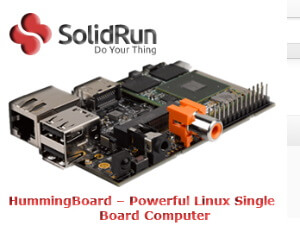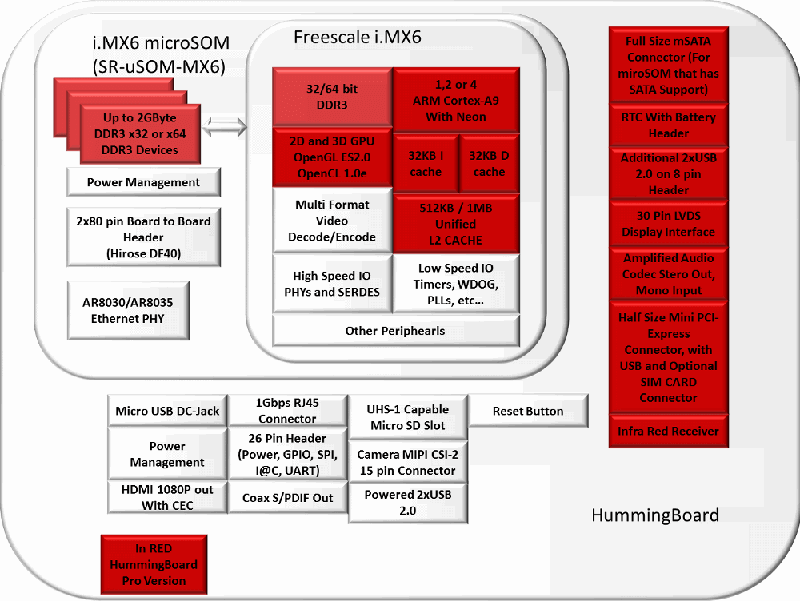HummingBoard HTPC
Last Updated: Jul 07, 2025

| Rating |  |
| Price | Free |
| Features | HummingBoard HTPC Option |
| Faster Than Raspberry PI | |
| Same Size as the PI | |
| Dedicated Usenet Option |
If you’ve been using Raspberry Pi as your home theater PC, you might want to consider the HummingBoard, a compact and fanless single-board computer (SBC) developed by SolidRun. Originally designed as a more powerful and modular alternative to early Raspberry Pi models, the HummingBoard supports several open-source operating systems, including Ubuntu, Android, and XBMC. Its compact size matches that of the Raspberry Pi, allowing you to use existing Raspberry Pi cases with the HummingBoard.
What It Offers
The HummingBoard features a faster processor than the Raspberry Pi, which enables it to handle a wider range of operating systems and applications. This performance boost is particularly appealing for users who have been using Raspberry Pi as a dedicated Usenet machine. The device’s enhanced processing capabilities allow it to manage automated downloads, unpacking, and other tasks more efficiently than the Raspberry Pi. If you’re weighing the option of using a Raspberry Pi or repurposing an old computer for your HTPC, the HummingBoard presents a compelling middle ground that offers superior performance at a reasonable cost.
HummingBoard offers several models with varying pricing and features:
- Edge - from $120
- Gate - from $104
- CBI - from $183
- Pro - from $112
Convenience
The board comes with all necessary schematics and layout information, allowing users to modify it according to their preferences. It enjoys robust support from the global digital maker community, making it an attractive option for hobbyists eager to explore the capabilities of digital devices.
HummingBoard Architecture Details

The HummingBoard is powered by a 1GHz ARMv7 processor, which is 300MHz faster than the Raspberry Pi’s CPU. While the Raspberry Pi has its strengths, its older processor and slower speeds impose limitations that the HummingBoard effectively overcomes. The HummingBoard also supports full Gigabit Ethernet, HDMI output, LVDS display, and mSATA and PCIe mini cards, providing flexibility for various applications.
Additionally, the device includes a powered USB port and a camera interface, enhancing its versatility for users who enjoy pushing the boundaries of single-board computers. Although upgrades are not currently available, the processor appears to be upgradeable, adding to its appeal for tech enthusiasts.
For those interested in building efficient HTPCs, the HummingBoard’s combination of decent power and the convenience of fitting into most Raspberry Pi cases makes it an attractive option. It excels in specific roles, such as handling Usenet downloads when paired with lightweight media automation tools like NZBGet or SABnzbd, which do not demand high-end specifications.
While the HummingBoard is no longer considered cutting-edge and has been surpassed by newer SBCs and mini-PCs in terms of processing power and multimedia capabilities, it remains a viable choice for hobbyists seeking a silent, low-power system for basic HTPC or background Usenet automation tasks, particularly when configured with sufficient storage via microSD, mSATA, or USB drives.
Compared to competitors, the Raspberry Pi 4 or 5 offers better community support and similar power efficiency, but may still require configuration for smooth 4K playback. ODROID boards like the C4 or N2+ provide superior hardware-accelerated video support, while the NVIDIA Shield TV excels in 4K streaming and Plex features, albeit with less open-source flexibility. Intel NUCs or mini PCs from Beelink or MinisForum deliver full Windows or Linux experiences with significantly more power, but at a higher cost and energy consumption. Libre Computer Boards also present affordable alternatives with better multimedia capabilities than the HummingBoard in some scenarios.
Relevant Links
- SolidRun Hummingboard Website — www.solid-run.com/freescale-imx6-family/hummingboard/
- ArsTechnica - arstechnica.com/information-technology/2014/07/hummingboard-looks-like-a-raspberry-pi-but-packs-in-more-power/







